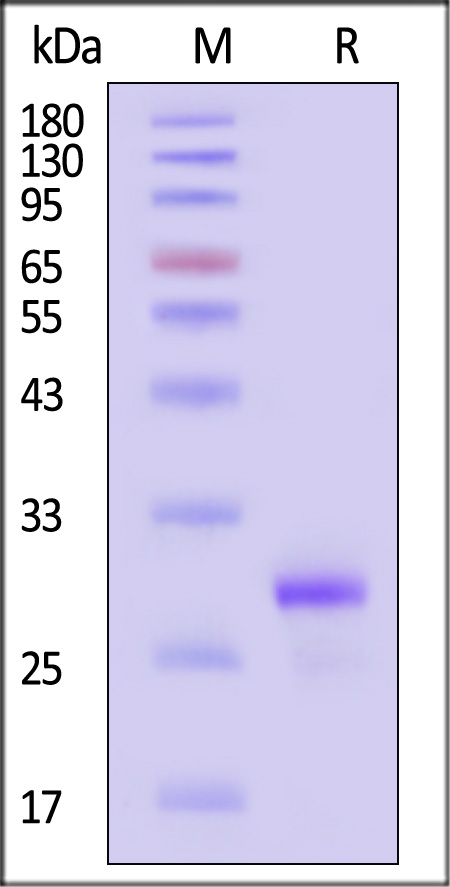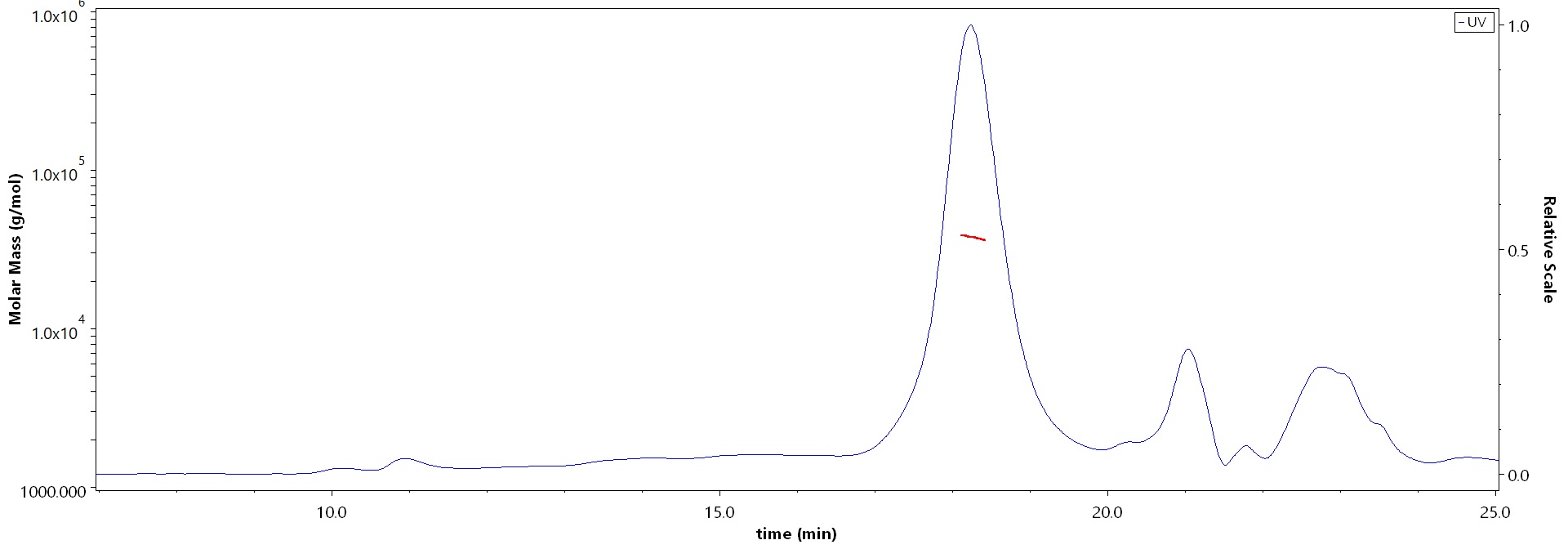分子别名(Synonym)
Nuclear receptor subfamily 4 group A member 1
表达区间及表达系统(Source)
Human Nr4a1 Protein, His Tag (NR1-H5144) is expressed from E. coli cells. It contains AA Ser 351 - Phe 598 (Accession # P22736-1).
Predicted N-terminus: Met
Request for sequence
蛋白结构(Molecular Characterization)

This protein carries a polyhistidine tag at the N-terminus.
The protein has a calculated MW of 29.5 kDa. The protein migrates as 25 kDa and 29-30 kDa when calibrated against Star Ribbon Pre-stained Protein Marker under reducing (R) condition (SDS-PAGE).
内毒素(Endotoxin)
Less than 1.0 EU per μg by the LAL method.
纯度(Purity)
>90% as determined by SDS-PAGE.
>90% as determined by SEC-MALS.
制剂(Formulation)
Lyophilized from 0.22 μm filtered solution in PBS, 0.2 M Arginine, pH7.4 with trehalose as protectant.
Contact us for customized product form or formulation.
重构方法(Reconstitution)
Please see Certificate of Analysis for specific instructions.
For best performance, we strongly recommend you to follow the reconstitution protocol provided in the CoA.
存储(Storage)
For long term storage, the product should be stored at lyophilized state at -20°C or lower.
Please avoid repeated freeze-thaw cycles.
This product is stable after storage at:
- -20°C to -70°C for 12 months in lyophilized state;
- -70°C for 3 months under sterile conditions after reconstitution.
电泳(SDS-PAGE)

Human Nr4a1 Protein, His Tag on SDS-PAGE under reducing (R) condition. The gel was stained with Coomassie Blue. The purity of the protein is greater than 90% (With Star Ribbon Pre-stained Protein Marker).
SEC-MALS

The purity of Human Nr4a1 Protein, His Tag (Cat. No. NR1-H5144) is more than 90% and the molecular weight of this protein is around 32-42 kDa verified by SEC-MALS.
Report
背景(Background)
Orphan nuclear receptor 4A1(NR4A1) belongs to the NR4A superfamily and plays an important role in inflammation, cell metabolism, proliferation and differentiation. NR4A1 expression can be induced by various stimuli in macrophages. NR4A1 has a bidirectional effect of inhibiting or promoting the inflammatory response of atherosclerosis (AS), which may be related to the different microenvironment, cell phenotype and transfection vector. NR4A1 can promote pathological angiogenesis, which is an important factor affecting plaque instability. The role of NR4A1 in inflammation and pathological angiogenesis of AS was reviewed, in order to provide a target for the treatment of stable plaque and provide a reference for the prevention and treatment of AS.























































 膜杰作
膜杰作 Star Staining
Star Staining












